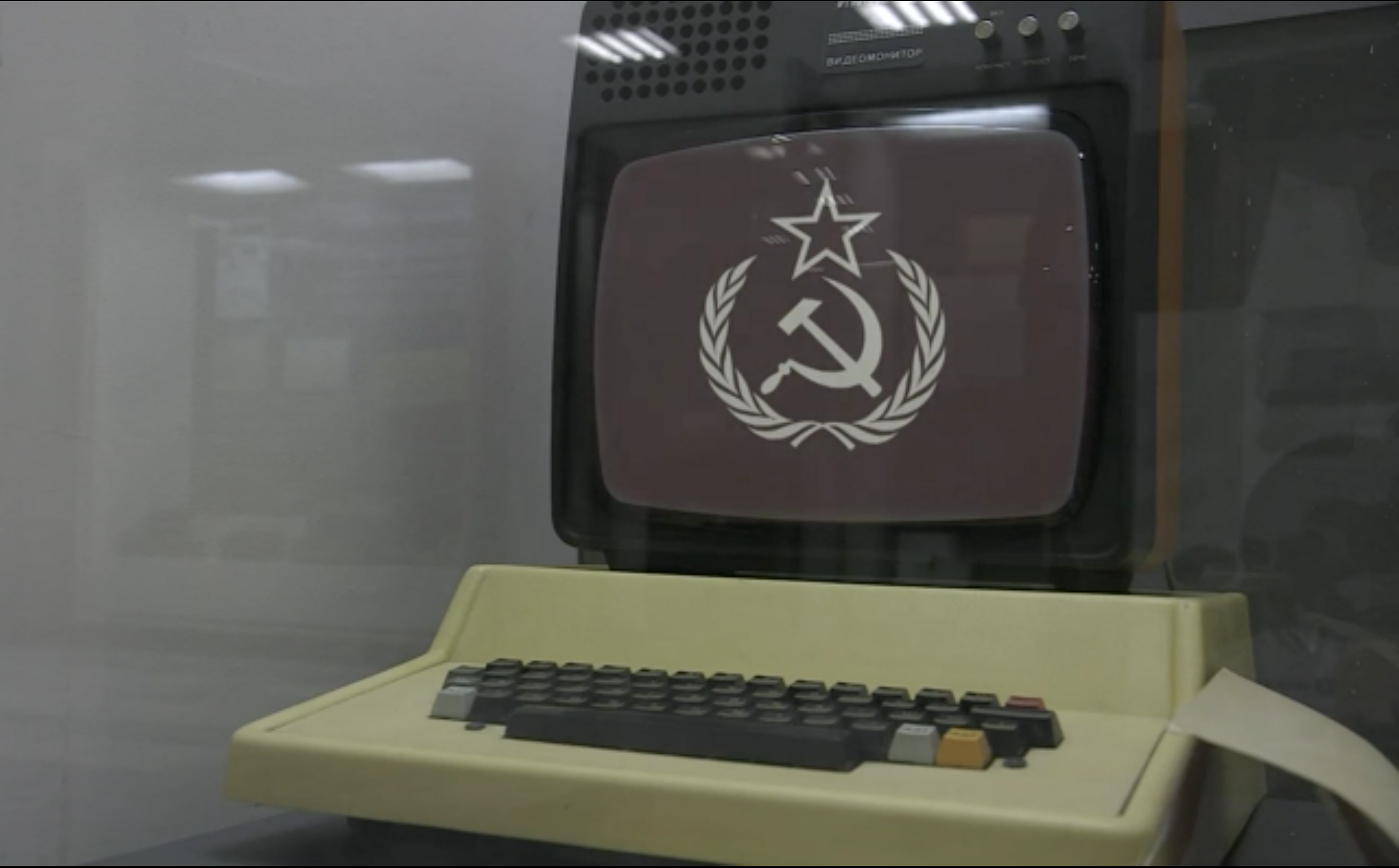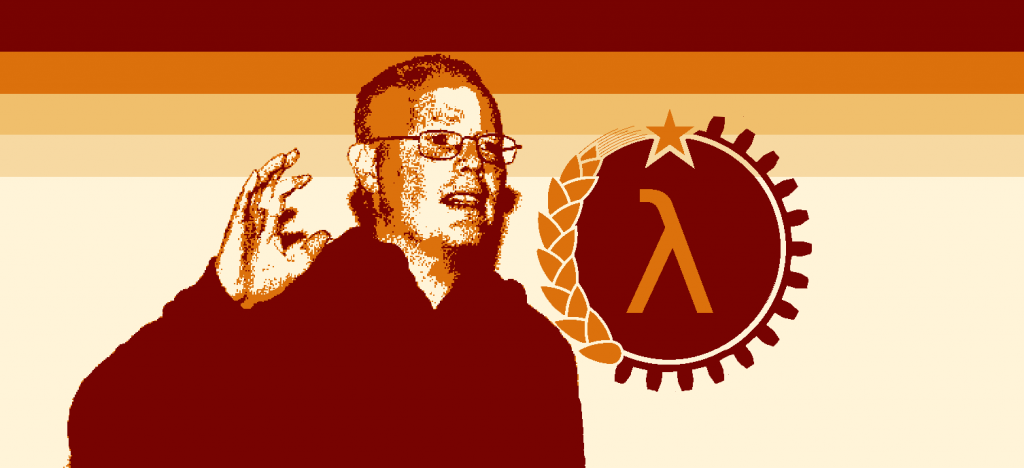Frank Rowley discusses the history, ideas and projects behind CyberSocialism and what they could mean for the left fighting capitalism in Britain today.
One of the biggest criticisms both from the capitalist world and from the workers of the former Soviet block (particularly in East Germany) was the comparative lack of variety in consumer products available to buy compared with the Capitalist world.
Leaving aside the capitalist influence of valuing coke and jeans over healthcare and almost zero unemployment, this, among many others, was a legitimate internal contradiction with the Soviet economic model of state-planned production.
When you have to manually calculate how much of everything is produced you naturally hit a limit to how many industries and unique products you can make at one time (since everything affects one-another dialectically).
This leads to a prioritisation of the most essential products to consume and commodities to trade, which inevitably leaves out more ‘luxury’ items.
This, combined with the capitalist capture of ‘desire’ and the hypnotic consumer culture of the 1960s onwards, expressed through Western TV, movies, pop-music and advertising which was always in the periphery of the Soviet citizen’s vision lead to the phenomenon of smuggling ‘luxury’ items over the Berlin wall.
This was made famous in the advertising of Levi Jeans and many other corporation during the 1980s, who used this fact to present themselves as promoting ‘freedom’ in their advertising against the ‘evil rooskies’.
Socialist Cybernetics
Meanwhile, the Soviets, from 1962 to 1970, were experimenting with ‘OGAS’, a vast computer system that linked up factories and industrial centres of Russia to a mainframe that recorded and processed this direct production information which economists could use to produce economic plans from.
This was advanced by the Chilean ‘Cybersyn Project’ (1971 to 1973) which, although never leaving the prototype stage, allowed factory workers to collect and visualise their production performance, check the impact of economic plans and linked them both to a central mainframe computer and every other factory in said system.
The system was principally designed by British ‘operations research’ scientist Stafford Beer, which embodied his notions of ‘organisational cybernetics’ in industrial management.
One of its main objectives was to devolve decision-making power within industrial enterprises to their workforce to develop self-regulation of factories. Both of these specific models failed to be implemented, the first due to late-Soviet bureaucracy’s mal-funding and the latter due to a CIA coup.

Cockshott
This was not lost on economists of the time, who (by the fact that 99% are die-hard Capitalists) smugly interpreted all these failings as absolute qualities of planned economic models and as evidence of the superiority of ‘free-market’ Capitalism being proven once again.
Meanwhile, in the mind of Scottish Computer Scientist Paul Cockshott, an idea was beginning to form. He saw in the rise of consumer ‘micro-PCs’ and teletext technologies in Britain in the 1980s a massive potential to revive the ideas of cybernetic economic planning only flirted with by the socialist states a decade before by using these already existing technologies.
Cockshott interpreted the Soviet system’s main contradictions leading to it’s collapse being the lack of worker’s control of production and the resistance of implementing algorithmic computer calculation in economic modelling.
Both of which he believed stemmed from the unfortunate bureaucracy of the Communist party of the Soviet Union post-Stalin and it’s denial of the continuing of the class struggle within socialist society (leading to a right-wing takeover with Khrushchev).
He predicted that the specific limitations of product variety (along with many other key contradictions of analogue economic planning) could be done away with through the automation of economic calculation that computers allow.
Cockshott finally formalised his ideas, and learned economics formally with co-author Allin Cottrell for his 1993 book ‘Towards A New Socialism‘, which was written in response to the collapse of the Soviet Union, as a practical rebuttal to the idea that Socialism died along with it.
Here he described in detail his practical model of a cybernetic Socialist economy which would utilise direct democracy and communal production as it’s key tenets.
Current Relevance
Today the left talks a big game about destroying Capitalism, but the practical models to replace it are few and far between. Most are so wrapped up with the moral outrage of the very obviously oppressive and exploitative system we all suffer under that they don’t have any time to actually think what else we could do.
Cockshott, and the few like him who have actually put the work in to produce these practical visions of our Socialist future are invaluable in our Capitalist Realist landscape, with our collective inability to imagine a positive future beyond capitalism.
Even more than that, in the current cultural landscape, ‘technology’ as a concept IS communicative consumer electronics. More people have a mobile phone than a working toilet, with most being ‘smart’ phones.
These devices are able to record audio and visual data from their camera and microphones with striking clarity (among an amazing amount of other sensory information) and process them locally and remotely almost instantaneously through the internet.
This is to say nothing of the comparatively immense power of regular PCs and already existing computer-based infrastructure that record and control every aspect of banking, surveillance, direct communication and industrial organization.
Cockshott had BBC Micro’s and Teletext, we have iPhones and Wifi internet.
Companies such as Walmart (as detailed in the infamous book ‘The People’s Republic of Walmart‘) in particular have engineered incredibly sophisticated cybernetic planning systems which can send information directly from individual tills to a central computer system to be incorporated into economic plans and models instantly through a private network.
The difference between the model of Walmart and CyberSyn or OGAS is basic: the former is made for profits at the expense of workers, the latter was for production FOR the workers.
This is the contradiction Cockshott, and the movement of CyberSocialism aims to resolve.
Frank Rowley is a member of the YCL’s Kent Branch
- ‘Towards a New Socialism’ can be read in full, legally and for free here: http://ricardo.ecn.wfu.edu/~cottrell/socialism_book/new_socialism.pdf
- Professor Cockshott also has a Youtube channel where he regularly produces short video lectures, here he introduces his book with context: https://invidious.snopyta.org/watch?v=Imh7W0Q1oyA
- Here is an older summary of TANS he produced around 10 years ago, in full: https://watch.breadtube.tv/videos/watch/a7546de4-646a-4bf0-9061-7f8b0ae501eeAnd
- Here is an audiobook version of TANS approved by Cockshott: https://invidious.snopyta.org/playlist?list=PL0-IkmzWbjoZNiItBbuVvKQBdE80tsyhx



